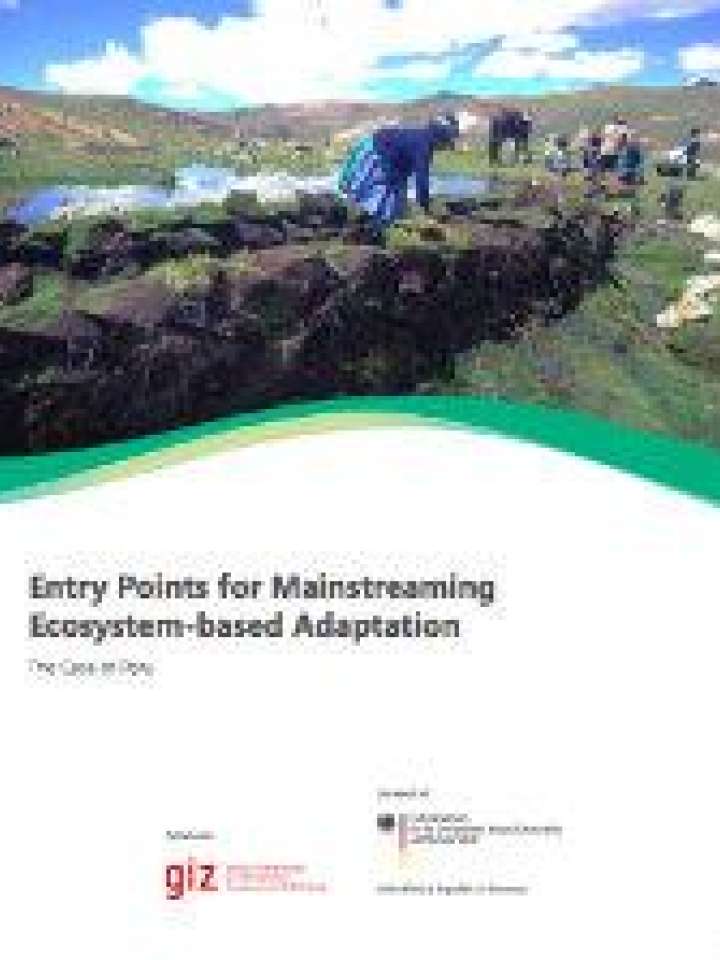Entry points for mainstreaming ecosystem-based adaptation: the case of Peru
This analysis examines the policy cycle stages (national agenda setting, sector policy formulation, resource allocation and implementation) and main actors involved in ecosystem-based adaptation (EbA) mainstreaming in Peru. It aims to provide an in-depth understanding of the effective entry points at sector and political level considering the driving factors, processes and roles of actors in the presence of barriers and enabling factors.
Results of the assessment show that there are a number of entry points for EbA mainstreaming across the four policy cycle stages, which can contribute to effective EbA scalingup. Given that the National Adaptation Plan (NAP) will be the implementation mechanism of the NDC on adaptation, it is crucial that the EbA approach is integrated as a cross-cutting element. As the National Adaptation Plan is currently in a formulation phase, there is a potential for the integration of EbA across the process. Additionally, examples show that Regional Climate Change Strategies are a principal policy instrument for EbA mainstreaming and articulation with regional and local development strategies. Critical sectors and areas with high potential for EbA mainstreaming include agriculture, forestry, water and sanitation, protected area management and disaster risk reduction. A potential entry point is the mining sector, which will need further research to identify better whether it is feasible.
The study analyses the enabling and hindering factors with regards to the institutional setting, policy and legal framework as well as capacity and awareness, and shares lessons learned on EbA mainstreaming in Peru.
Explore further
